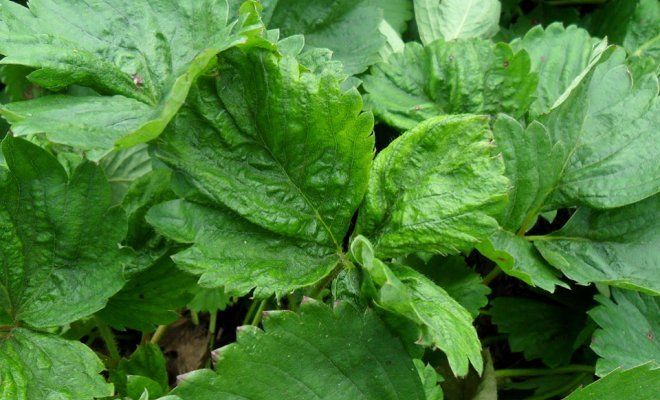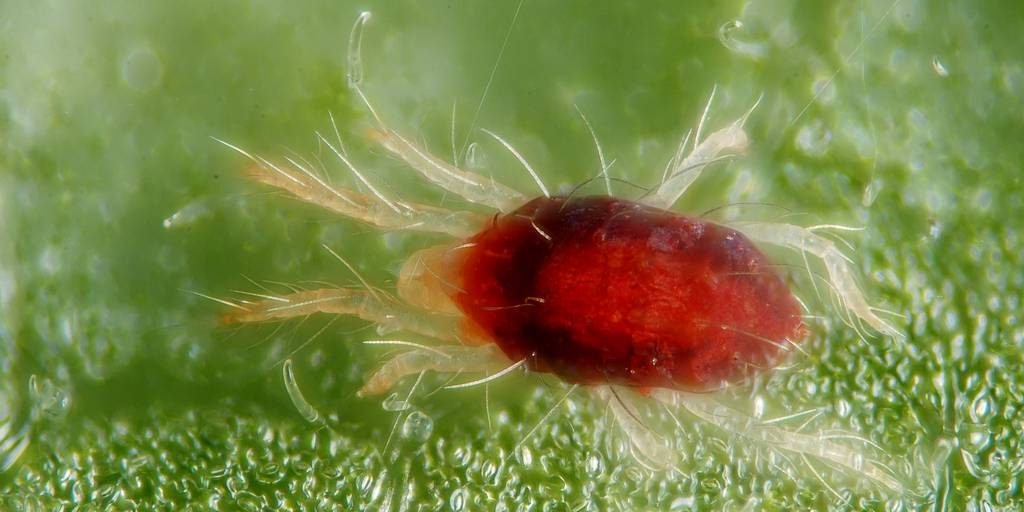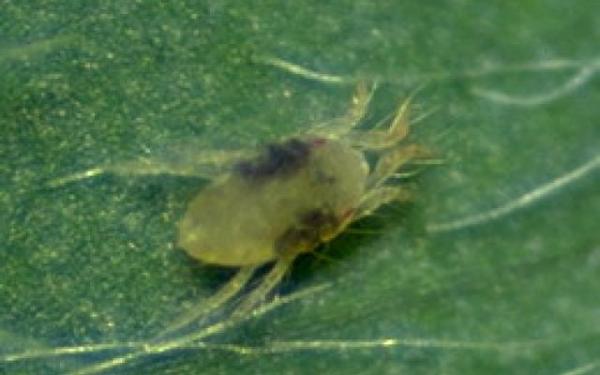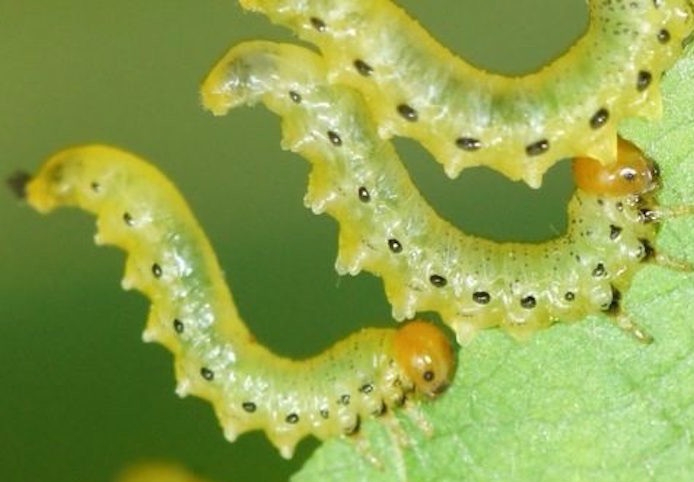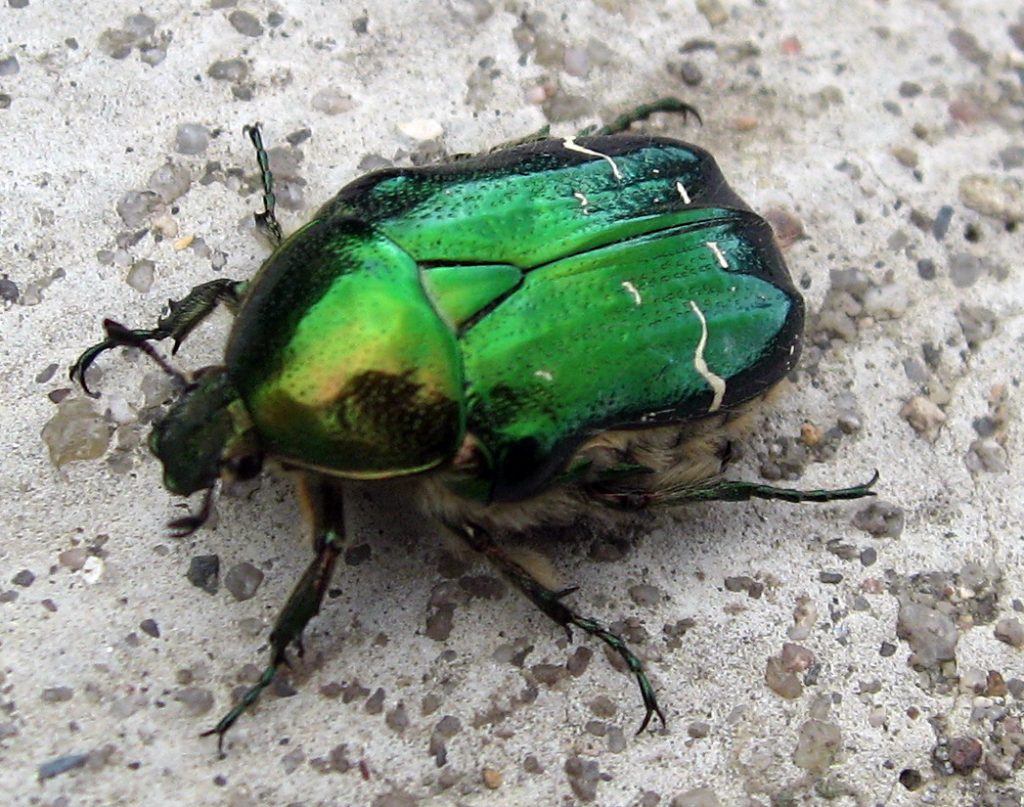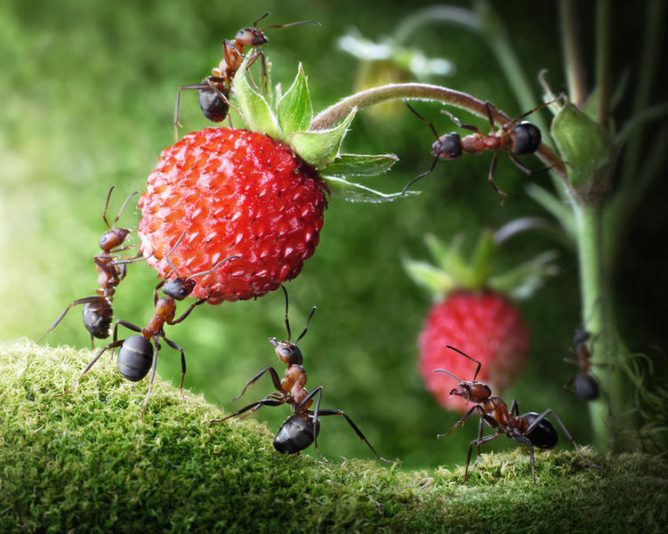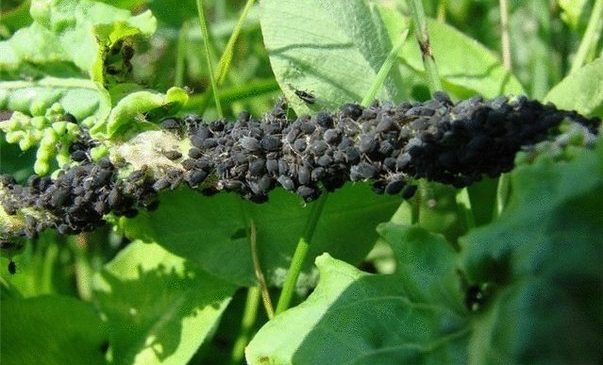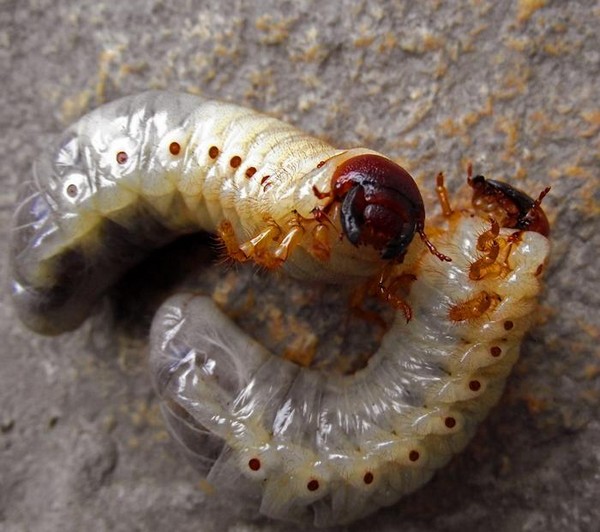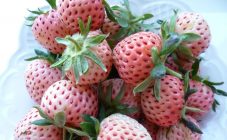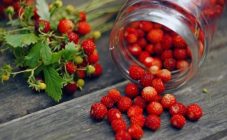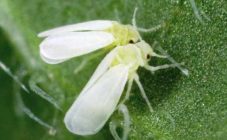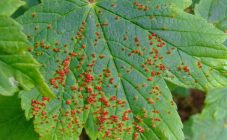Content:
Every gardener dreams of growing a variety of berries and fruits on his site. Garden strawberries (or strawberries) are among the most popular fruit crops grown in temperate climates. In addition to the fact that the plant needs special care, the bushes are often attacked by strawberry pests, and the fight against them turns into continuous exhausting work.
Signs of pests
There are a large number of pests that completely destroy or severely damage all parts of the plant. You can understand that pests have appeared on strawberry bushes by the following signs:
- deformation and twisting of young leaves;
- wrinkled oily leaf blades;
- crushing of fruits;
- drying and yellowing of the bush;
- small dry spots and holes on the leaves, as well as eaten edges;
- wilting of buds;
- short thick cuttings;
- eaten berries.
At best, the amount of the harvested crop will decrease from the attack of pests; with a serious infection, you can completely lose the strawberry bed.
Types of pests, how to get rid of
Spider mite
These are small pests, up to 0.5 mm, which settle on the back side of the leaf plate, so it is quite difficult to notice them. The external manifestation of the presence of this pest is small white dots on top of the leaf and a thin web that encircles the entire bush. The peak of reproduction of these pests is the end of the fruiting period. Dry hot weather is favorable for the spread of the tick. The negative impact of the massive filling of the bush with this pest is drying of the leaves and the crop. In addition, it is a carrier of fungal infections.
Methods for dealing with spider mites on strawberries:
- Compliance with crop rotation, but only if new planting material is planted in a new place, and not a mustache or seedlings from the previous bed.
- Complete mowing of tops and grass with their subsequent harvesting and burning.
- Strawberry processing with chemicals: Aktellik, Apollo, Aktofit. The drugs have a different principle of action on the pest, but the general rule is one - the use of drugs at the right time in the correct dosage allows you to completely rid the plants of the spider mite.
Strawberry mite
Very small pest, only 0.2 mm long. It is unrealistic to see even an adult, since, with its meager size, it still has a transparent body. You can determine the infection by the state of the bush:
- Grinding the leaves and the whole bush;
- Wrinkled leaf blade at an early stage of bush development.
The mite settles on young plants from the lower part of the leaf, sucks out the juices, so the young bush looks incredibly squat and squat, since it does not have enough strength to develop. High humidity and high temperature are favorable conditions for mite development. Fitoverm is especially distinguished among biological preparations in the fight against strawberry mites. It is not harmful to the human body and harmful to the pest. It is recommended to dilute the product strictly according to the instructions.
Black fleas
Adults are often found on strawberry, strawberry and raspberry leaves, and the larvae destroy the root system. Determining the presence of a pest is quite simple.Adult fleas gnaw the leaves from the back side, from this small sores are formed. A denser top layer is beyond the power of these pests, so they do not gnaw it. But due to the lack of sap flow, the leaf plate dries up and breaks. From this, all the strawberry leaves are in a hole, what to do in this situation:
- Regular moderate watering, as fleas do not tolerate moisture;
- Timely weeding and loosening. These insects spread on strawberries precisely through weeds. The larvae pupate in the soil, the constant loosening of the row spacings will destroy them;
- If, upon daily inspection, it turns out that the flea population is increasing, chemical treatment must be done;
- It is recommended to plant calendula, marigolds and other fragrant flowers as a natural protective barrier around the perimeter of the garden.
Caterpillars
Before embarking on the fight against this pest, it is necessary to determine what species it belongs to. Caterpillars on strawberries can be larvae of the following pests:
- Marsh scoop. A miniature furry butterfly that lays eggs on the underside of a leaf. The caterpillars that appear eat up all parts of the plant, including berries. The special danger of this pest lies in the fact that it passes through the root collar, which makes the plant quickly wither and die.
- Strawberry leaf roll. An adult insect does not damage bushes. Their babies are black larvae, beginning to move on the veins on the underside of the leaf. Gradually, the entire plate turns out to be studded with holes. Larvae appear all summer.
- Sawfly. Bright green caterpillars can destroy all fruits. You can determine the presence of a pest by the damage to the leaves. First, the caterpillar eats the edge of the leaf, moving towards the center, until one central vein remains of it.
Any caterpillars leave strawberry leaves in holes, than to treat the plant from these pests:
- Chemicals such as Aktara, Marshal, Zolon, Karbofos. It is necessary to use drugs strictly according to the instructions attached to the package.
- Traditional methods are not always as effective as chemicals, but they are safer for humans. A good result is given by means such as an infusion of wormwood (fresh grass with water in a 1: 1 ratio), a decoction of chamomile (100 g per 1 liter of boiling water), dusting with ash or tobacco dust.
In addition, it is always worth taking precautions:
- Choose high-quality planting material;
- Do not plant seedlings near crops that are affected by the same pests.
Beetles
- Bronzovka... A black beetle with an iridescent back and a shaggy body. Children feed on roots, adults leave holes in leaves and flowers. You can get rid of the larvae by digging up the soil in the fall. It is necessary to leave large lumps of earth, which will freeze through and through in winter, and the larvae will die. It is rather difficult to get rid of chemicals from adults, because they are active at the time of flowering, which means that most drugs are not suitable for processing. From safe means, Calypso gives a good result.
- Leaf beetle... Small beetle, up to 4 mm, yellow or orange. It is clear from the name that it feeds on foliage. At the same time, it can leave characteristic holes on other parts of the plant. In addition, dried greens and small fruits speak of its presence. To prevent the appearance of this beetle, it is necessary to remove weeds in a timely manner and dust the soil with tobacco dust. To combat the leaf beetle, you need to spray the lower part of the leaves with Metaphos or Karbofos twice. This should be done before flowering and after harvesting the berries.
Ants
In general, these are not the most harmful insects. Their danger lies in the fact that they arrange their anthills right under the strawberry bed. Plants can die from this. It is worth noting that ants settle where aphids are.Therefore, first of all, you need to take care of the destruction of aphids from the site, then the ants will also move. In the evening, you can carefully dig up the anthill along with the egg clutches, place it in a bucket and take it outside the site. The edges of the bucket can be oiled to prevent the ants from escaping. Also, a bait consisting of honey, sugar and boric acid (10 g per 2 tablespoons of sweets) works against ants. It is still not recommended to destroy these insects, since they are considered useful. It is preferable to relocate them from the garden.
Birds
For birds, strawberries are the same food product as for humans. You can fight them only by scaring away or distracting attention. You can scare off the birds by placing sticks on which cans are strung along the perimeter of the bed. When the wind blows, they create noise that frightens off birds. In the flower shop, you can buy red phyto balls that decorate a vase. The balls need to be laid out in the garden. In the sun, they will shine, attracting the attention of pests. But they will not like the taste, so birds will also be indifferent to berries.
Black aphid
These are small pests that feed on strawberry juice. Aphid colonies settle on the bottom of a leaf and cover it with a sticky, sweet liquid that attracts ants. Leaves begin to curl, ovaries do not form after flowering. Measures should be taken immediately when aphids are found on strawberries, since it takes a long time to fight. An effective means against pests is a soap-ash solution. In addition, you can wipe the leaves with garlic infusion (5 grated cloves in 500 ml of water with the addition of liquid soap for good adhesion). A good effect is achieved by simply rinsing the insects with water from a hose, but the procedure is temporary.
An effective measure of pest control can be the location of the strawberry bed next to garlic and onions. The natural enemy of aphids is the ladybug. You can deliberately add them to the garden bed. It is worth resorting to chemicals in extreme cases when other methods do not work. Fufanon and Aktara, diluted, according to the description on the package, show good results against pests.
Nematode
It is very difficult to see this pest at an early stage, and it takes a long time and troublesome to deal with large ones. One female strawberry stem nematode lays up to 1000 eggs at a time. This is not the usual masonry, but a kind of cyst on the stem or root of the bush. The sealed cyst has a high immunity to chemicals, easily adapts to any weather conditions. Cysts located in the soil can remain in standby mode for several years, waiting for optimal conditions.
The presence of a pest can be determined by slowing down the development of strawberries, shriveled leaves and ugly berries. Treatment of strawberries from nematodes begins at the stage of preparation for planting. Seedling roots are dipped in Parathion solution for 20 minutes, after which they are washed with water. Additionally, the seedlings can be dipped in boiling water (+ 47˚C… + 50˚C) for 10 minutes, and then into cold water until they cool completely. It is recommended to fertilize the soil with compost. It contains a fungus that destroys the nematode. Also, this pest does not tolerate the neighborhood with calendula and rudbeckia. Compliance with the recommended planting distances (at least 0.5 m between rows and 0.5-0.7 m between bushes) and timely weeding also prevent the appearance of these pest worms.
Thrips
Small pest, 1 mm in size, yellow. It settles in colonies underneath the leaf and feeds on its juice. As a result, the leaves are deformed and fall off. Flowers also suffer. You can cope with this pest by spraying the foliage with soapy water or dandelion infusion (grass with water in a 1: 2 ratio).If natural remedies do not work, you can treat the bushes with Zolon or Karate. Spraying chemicals should be stopped before flowering begins. The frequency of processing is 1 time per 7 days.
May beetle larvae
An adult is not dangerous. This insect is one of the largest living in our latitudes. Their larvae are huge, thick white caterpillars that develop in the soil for several years. The first two years they feed on humus and humus, in the third year they begin to destroy the roots of strawberries. To prevent the appearance of larvae in the soil, 2 years before planting strawberries, you need to sow the area with lupines, marigolds, and in the fall, dig up the area without breaking lumps. Next spring, the soil must be treated with ammonium nitrate and the garden must be kept clean throughout the season (constantly weed out). Without food, the larvae will die in empty soil. You can get rid of the already existing larvae by chemical treatment with the drug Antichrushch or Force, diluted according to the instructions. Processing is allowed to be carried out strictly before the formation of berries. As a prophylaxis against pests, the bush is treated from a solution of 20 ml of iodine per 10 liters of water. The finished composition is poured over the bushes under the root with a volume of 1 liter.
When you can not fight
If you neglect the control measures and allow pests to wield the bushes, then you can forget about the harvest not only in the current season, but, possibly, in the next. In the worst case, you can completely lose the strawberry patch. However, if during the season there were no insects on the bushes, but at the time of picking the berries it was found that pests appeared in some places, you should not panic and take action. You need to calmly wait for the end of fruiting, then mow all the tops at the root and burn. This measure will be sufficient.
Preventive measures
Pests of garden strawberries may not appear at all, if you follow some rules:
- Selection of a variety with high immunity against diseases and pests, for example, Bogotá, First grader, Red gauntlet, Chomora turussi.
- Pre-planting seedlings processing. 15-20 minutes before planting, the strawberries are left in hot water + 45˚C… + 47˚C, then cooled in cool water.
- Compliance with crop rotation and useful life. Strawberries bear fruit well in one place for no more than 4 years, and remontant varieties - no more than 2 years. After this period, it is necessary to update both the planting site and the bushes.
- Mulching the row spacings creates a safe layer against pests. Peat, grass cuttings and other organic matter, as well as covering material, are suitable.
- Soaking the roots in stimulants, for example, Epin, Zircon.
- For cultivation, it is worth selecting only the most powerful and strong strawberry seedlings.
All pests significantly reduce the quantity and quality of the crop, so it is important to monitor their appearance and take timely measures. The ideal option would be to carry out a set of preventive measures.
